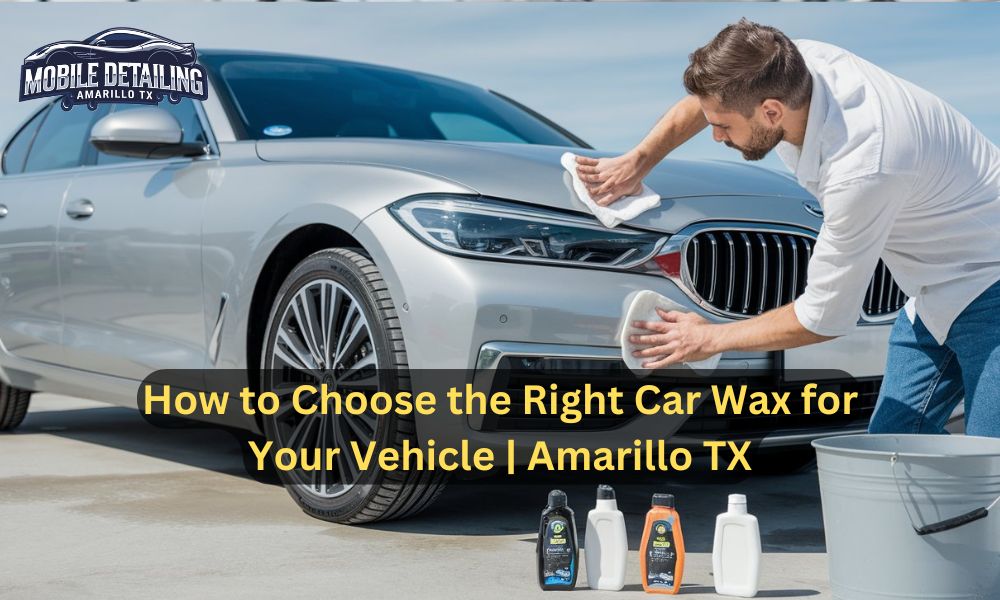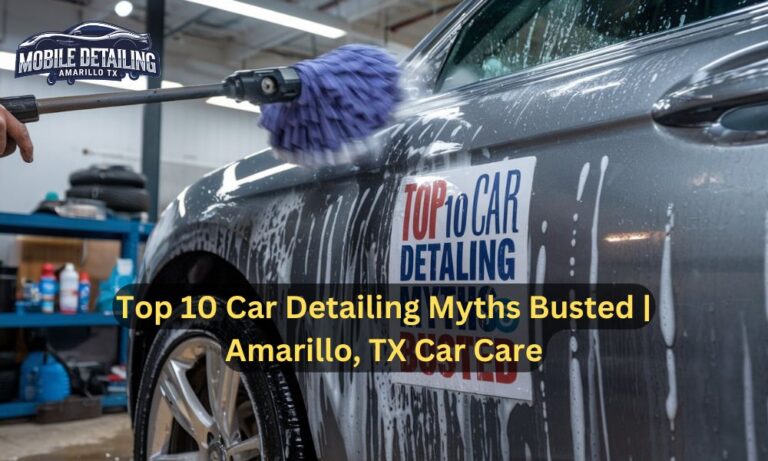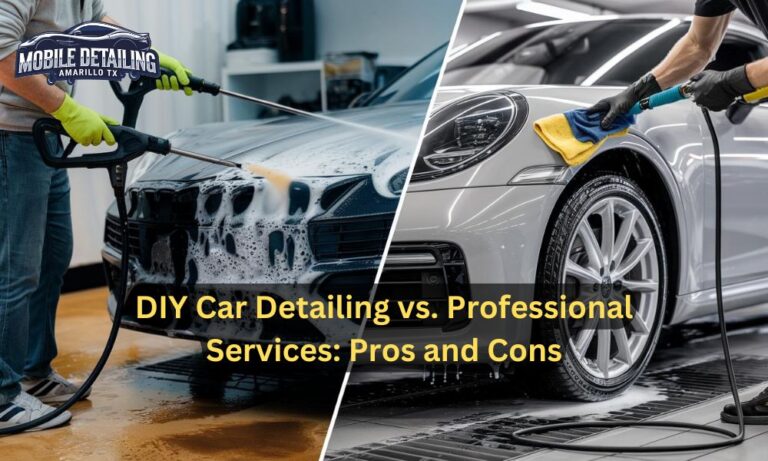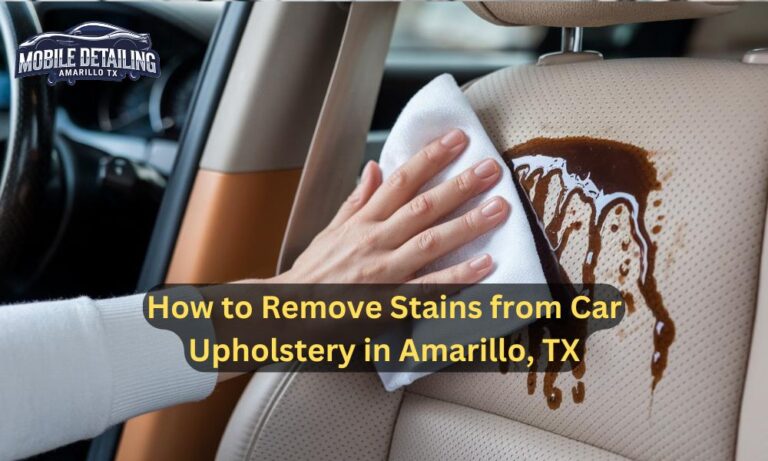Car wax is an essential product for maintaining the aesthetic appeal and longevity of your vehicle’s exterior. Whether you drive a sleek sports car or a family SUV, selecting the right car wax can enhance your car’s shine, protect its paint, and even help in maintaining its resale value. With so many products on the market, it can be challenging to know which wax is best suited for your vehicle. In this guide, we’ll explore how to choose the right car wax for your vehicle and the factors you should consider.
What is a Car Wax?
Car wax is a product applied to the exterior of a vehicle to provide a protective layer over the paint. Its primary purpose is to protect your car from environmental contaminants like UV rays, dirt, and moisture. Over time, these contaminants can damage your car’s paint, leading to fading, oxidation, and even rust.
Car wax also enhances the shine of your vehicle, giving it that showroom-quality gloss. Depending on the type of wax you use, it can either offer short-term shine or long-term protection.
Types of Car Wax
There are several types of car wax available in the market, each designed to cater to different needs and preferences. Here are the most common types:
1. Natural Carnauba Wax
Carnauba wax is a natural wax derived from the leaves of the carnauba palm tree, native to Brazil. It is known for providing a deep, warm shine and excellent water repellency. Carnauba waxes are usually blended with other natural and synthetic materials to enhance their durability and ease of application.
Pros:
- Provides a rich, glossy finish.
- Excellent for show cars or vehicles you want to keep in pristine condition.
Cons:
- Shorter durability compared to synthetic waxes (typically lasts about 6-8 weeks).
- More expensive than other types of wax.
2. Synthetic Wax (Paint Sealants)
Synthetic waxes, also known as paint sealants, are made from polymers designed to bond with the vehicle’s surface. These waxes offer longer-lasting protection compared to natural carnauba wax.
Pros:
- Long-lasting protection (up to 6 months).
- Easier to apply than natural wax.
Cons:
- Does not provide the same depth of shine as carnauba wax.
- Some may find the appearance too “plasticky” or artificial.
3. Spray Wax
Spray waxes are quick and easy to apply, making them a favorite for those short on time. They offer a decent shine and protection but do not last as long as paste or liquid waxes.
Pros:
- Quick and easy to apply.
- Ideal for touch-ups between waxing sessions.
Cons:
- Less durable and requires frequent reapplication.
- May not provide as deep a shine as paste or liquid waxes.
4. Liquid Wax
Liquid waxes are a popular choice due to their ease of application and balanced performance. They offer a good combination of shine and durability.
Pros:
- Easier to apply than paste wax.
- Provides good shine and protection.
Cons:
- Can be difficult to apply evenly, leading to streaks if not done correctly.
- Durability can vary depending on the product.
5. Paste Wax
Paste wax has been a staple in car care for many years. It offers superior protection and shine but requires more effort to apply.
Pros:
- Excellent durability and shine.
- Provides a thicker protective layer.
Cons:
- Takes more time and effort to apply.
- Requires more elbow grease to remove once dried.
Factors to Consider When Choosing a Car Wax
When choosing the right car wax for your vehicle in Amarillo, TX, you need to consider several factors to ensure that your choice meets your vehicle’s specific needs.
1. Climate and Weather Conditions
The climate in Amarillo, TX, can be harsh on vehicles, especially with its hot summers, windy days, and exposure to UV rays. A wax with strong UV protection is essential for preventing the sun from fading or oxidizing your car’s paint. Synthetic waxes or paint sealants are a good choice as they offer long-lasting protection against UV damage.
2. Age and Condition of Your Vehicle
If your vehicle is brand new or has well-maintained paint, a natural carnauba wax may be the perfect choice for achieving a showroom-like shine. However, if your car’s paint has seen better days and needs extra protection, synthetic wax may be the better option due to its ability to provide long-lasting protection.
3. Frequency of Use
How often you drive your car and expose it to elements will determine the durability you need from a wax. If your vehicle is a daily driver that’s often exposed to rain, dust, and sun, a synthetic wax or sealant may be more practical. However, if your car is more of a showpiece, you might prefer the high-gloss finish of carnauba wax.
4. Application Method
Are you someone who enjoys detailing your car by hand, or do you prefer a quick and easy solution? Paste wax and liquid wax may require more effort but provide longer-lasting results, while spray wax is easy to apply but may need frequent reapplications. Consider how much time and effort you’re willing to invest in waxing your car.
5. Shine vs. Protection
Some waxes are designed to emphasize shine, while others focus more on protection. Carnauba wax is known for its rich shine but doesn’t last as long as synthetic waxes, which offer better protection. Consider your priorities when selecting a wax—whether it’s more about aesthetics or protecting your vehicle’s paint from the elements.
How to Apply Car Wax Correctly?
Choosing the right car wax is only part of the equation; proper application is equally important for getting the best results. Here’s a simple step-by-step guide to applying car wax:
- Wash and Dry Your Vehicle: Always start with a clean car. Washing your vehicle removes dirt, grime, and contaminants that could scratch the paint during waxing.
- Apply the Wax in Sections: Whether you’re using paste, liquid, or spray wax, it’s best to work in small sections at a time. Apply a thin, even layer using a foam or microfiber applicator pad.
- Allow the Wax to Haze: Most waxes need time to cure or haze before they are buffed off. Refer to the product’s instructions to determine the appropriate wait time.
- Buff the Wax: Once the wax has hazed, use a clean, soft microfiber towel to buff the wax off in circular motions. This will remove excess wax and leave a smooth, shiny surface.
- Repeat as Necessary: For added protection and shine, consider applying a second coat of wax after the first has fully cured.
Conclusion
Choosing the right car wax for your vehicle in Amarillo, TX, can make all the difference in preserving your car’s appearance and protecting its paint. Consider factors such as climate, your vehicle’s condition, and how often you drive it when making your decision. Whether you choose a natural carnauba wax for its stunning shine or a synthetic wax for long-lasting protection, proper application will ensure your vehicle looks its best for years to come.






